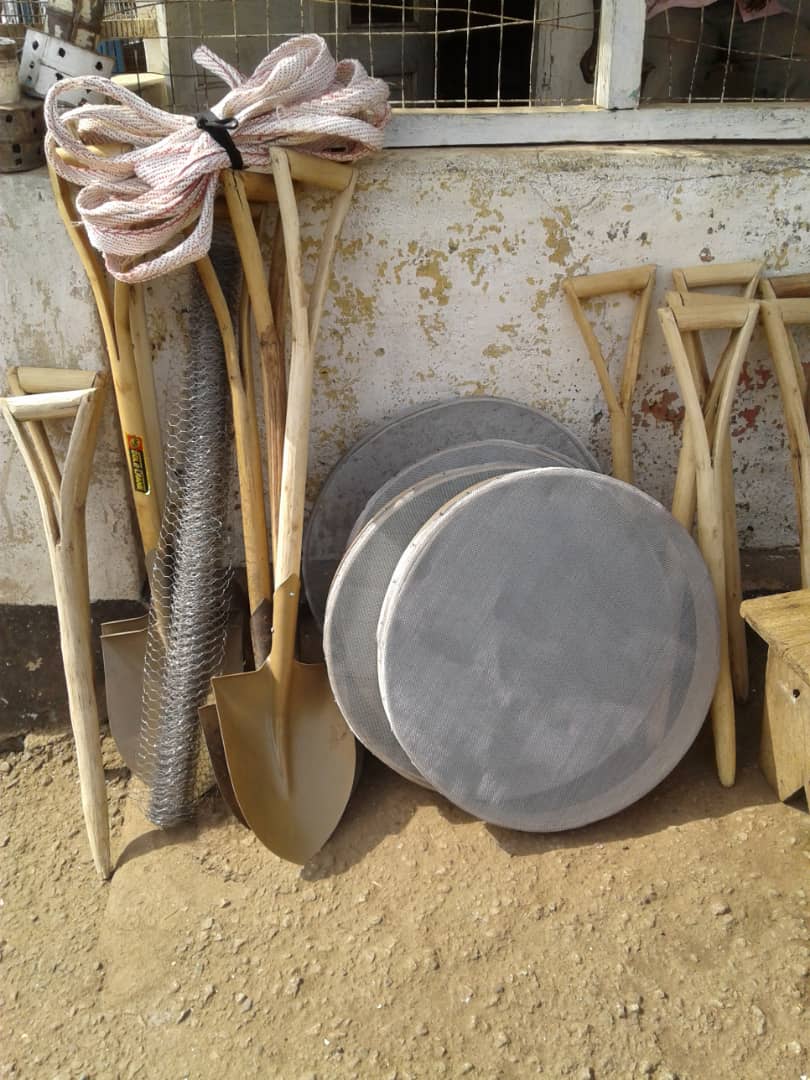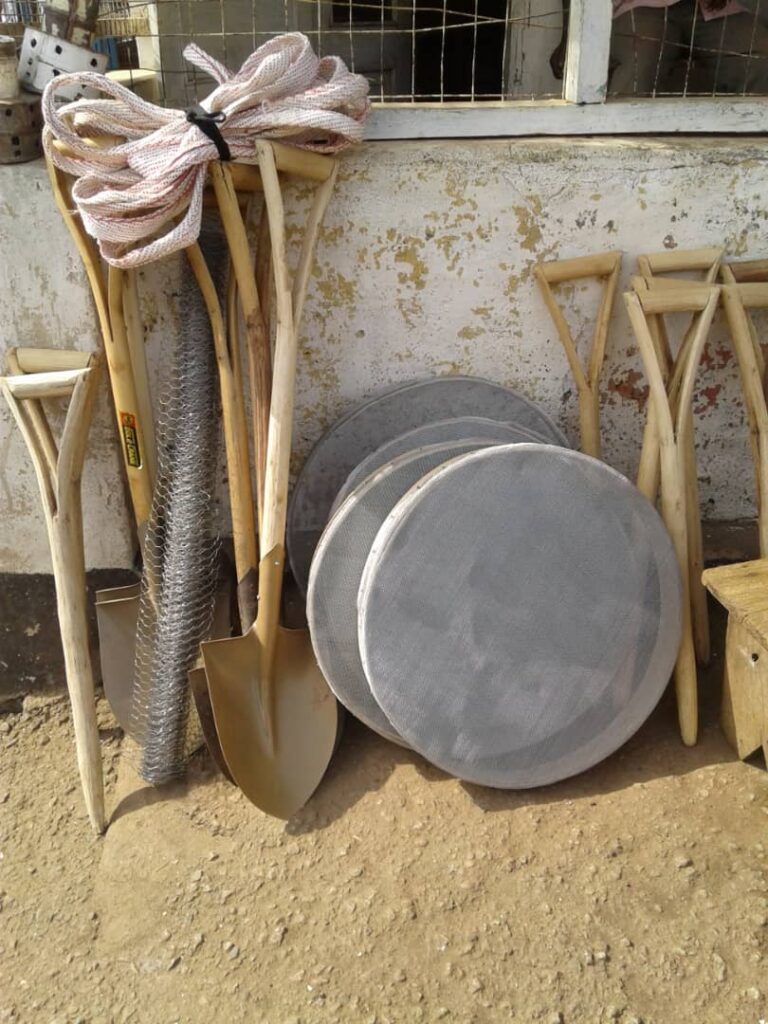
Artisanal diamond miners in Sierra Leone struggle for survival
By Emma Black
After five years of apprenticeship under his father and 12-years working dry riverbeds as an artisanal miner, Alieu Musa knows a thing or two about digging, swishing gravel and finding diamonds. His roughened hands parade his 37-years as they grip the handlebars of the small “okada” (a local motorbike) as he wheels over the pitted roads towards a section of lower Bambara Chiefdom, Kenema District, in the south east of Sierra Leone, on his way to the artisanal diamond mine he manages. It’s also where Musa meets his labourers, shovels, sieves or “shakers” and pickaxes for another day of back-breaking digging.

Alieu Musa and his family
For about six months of the year, each morning before sunrise, Musa zips up his beaten windbreaker and packs a sachet of supplies to hunt for that elusive “get rich quick” diamond. It’s an hour motorbike ride and 45-minute hike to the mining site from the village where Musa was born and has lived his entire life. Koina village is a small collection of about 50 mud-brick houses topped with sheets of corrugated zinc. Musa’s 3-room house is unfinished and his six children (from two wives) see him off and wish him luck. After Musa disappears along the dusty road, three of his children will busily prepare to attend a local school over a mile away. Musa didn’t finish primary school but wants his children to be educated because, “I don’t want them to have to live this hard life like I have,” he said.
“Artisanal mining” means mining operations must be less than ten metres deep, less than one acre and only rudimentary hand-held tools can be used. The use of motorized machines except water pumps is not permitted. Artisanal mining operations use untrained miners with very limited technical and financial capacity, non-mechanized technology, and ad hoc mining methodologies. Poverty and artisanal mining are inextricably linked and dominated by rural, under-educated, poor people.
It’s mid-season for artisanal diamond mining and labourers are slowly working their way down… through layers of topsoil to the gravel under layer. “The gravel is where the diamonds are, hopefully. We have to dig down about 8-12 feet to find the stones,” said Musa. For six months of the year, Musa leads a small group of ten labourers working on two plots under the hot burning sun. The diggers are working on removing the first layer of topsoil, shoveling the dirt into a larger, water-filled pit that had been mined the previous year. Mamoud Morra, stands bare-chested and in bare feet hoisting dirt one shovelful at a time. He said, “We won’t find any diamonds at this point but we have to remove this layer and backfill to get down to where the diamonds are in the gravel.”
Musa pays his labourers Le5,000 (approximately .50 cents) per day and offers two cups of rice a day. Some of the labourers receive even less… for their days of backbreaking digging.
Artisanal workers/diggers are not formally trained and typically receive wages paid by day, food and some percentage of anything they find. The payment scheme is not formalized and does not comply with local labour laws. Mine workers/diggers share a certain percentage, often broken up by the mine manager and payment is based on how much is produced.
Musa’s uncle is the mining licence holder and “Brima” the mine investor, who lives in Kenema, supplies the rice and money. Brima is the supporter who visits the mine once a week. Supporters have emerged as “financiers” of small artisanal operations but are generally illegal. They pay for equipment, pay wages, provide housing, food, etc. In exchange, these “supporters” receive a huge percentage of anything uncovered.

Tools of the artisanal mining trade
According to a Ministry of Mines and Mineral Resources report in 2018, “The mine supporters or financiers are recognized by sector regulators and their activities are monitored, though not effectively, due to human capital and logistical constraints. This lack of Government oversight creates opportunities for exploitative relationships between “supporters” and miners. In most cases, financing arrangements between financiers that effectively become beneficial owners of artisanal mining operations and mineral rights owners are undocumented and unclear; this ongoing lack of transparency makes it impossible for government to determine actual production, investment levels, revenues generated, and benefit sharing, if any.”

